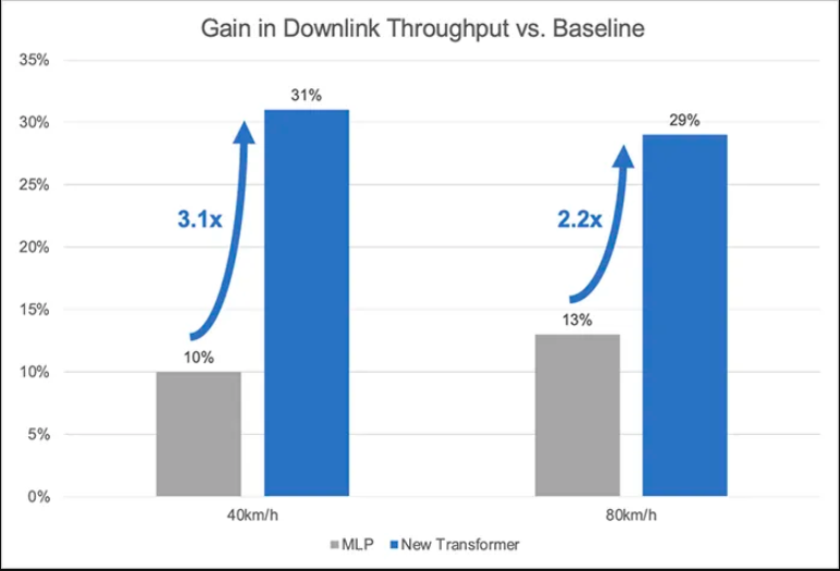SoftBank has announced a major breakthrough in its research and development of AI-powered Radio Access Networks (AI-RAN).

SoftBank, leveraging the power of Transformer AI architecture for wireless signal processing, achieved a 30 percent increase in 5G throughput in live demonstrations, marking a significant milestone in the evolution of 5G-Advanced and future 6G networks.
Transformer AI: Driving the Next Phase of AI-RAN
SoftBank’s latest development moves AI-RAN from concept to practical implementation. Unlike traditional Convolutional Neural Networks (CNNs), which improved uplink throughput by about 20 percent, the Transformer-based AI pushed gains to nearly 30 percent compared to baseline non-AI methods.
The demonstration, conducted in a 3GPP-compliant live wireless environment, proved real-time performance and ultra-low latency, validating that Transformers can effectively optimize communication quality in real-world 5G networks.
Key Results of SoftBank’s Demonstration
30 percent throughput gain: Transformer AI boosted uplink throughput significantly compared to conventional methods.
Ultra-low latency: Achieved 338 microseconds average processing time, 26 percent faster than CNNs, overcoming the challenge of maintaining both high performance and low latency.
Simulation success: Downlink throughput doubled in improvement, reaching 29 percent at 80 km/h and 31 percent at 40 km/h, compared to just 13 percent with earlier Multilayer Perceptron (MLP) AI models.
Technical Innovations Behind SoftBank’s Transformer AI
SoftBank tackled the critical challenge of maintaining real-time processing under 1 millisecond, essential for 5G and beyond. The new lightweight Transformer model introduces several innovations:
Self-Attention for signal correlation
Captures wide-ranging signal correlations across frequency and time, unlike CNNs that focus on local input areas.
Handles complex patterns caused by interference and reflection, improving accuracy.
Preserving physical signal information
Unlike traditional normalization, the model processes raw amplitude signals, retaining vital physical data for enhanced channel estimation.
Versatility across RAN tasks
Can be easily adapted for channel interpolation, SRS prediction, and demodulation with minor output adjustments.
Reduces development costs and time by eliminating the need for multiple specialized models.
Why This Matters for 5G-Advanced and 6G
This achievement underscores the role of AI and GPUs in future networks, proving that advanced AI models can deliver both higher performance and efficiency. By integrating AI-driven RAN on GPUs, carriers can upgrade networks via software updates, extending hardware lifecycles and improving capital efficiency.
SoftBank’s success with Transformer AI sets the stage for:
More reliable 5G connectivity with faster uplink and downlink speeds.
Enhanced user experience with lower latency and higher throughput.
Scalable AI-RAN deployment in preparation for 6G infrastructure.
SoftBank’s Next Steps in AI-RAN Commercialization
Looking forward, SoftBank plans to accelerate the commercial rollout of its Transformer AI architecture in 5G networks. By pushing AI-RAN beyond experimental stages, the company aims to:
Improve communication quality for businesses and consumers.
Enhance operator efficiency through AI-driven automation.
Contribute to the global advancement of 5G-Advanced and 6G ecosystems.
SoftBank’s recent capital expenditure has been significant, reflecting its ongoing investments in telecom networks and digital infrastructure. For the quarter ended June 2025, SoftBank’s Capex stood at about USD 1.5 billion. On a trailing twelve-month basis, SoftBank invested nearly USD 5.9 billion. These figures highlight SoftBank’s focus on enhancing its 5G deployment, AI-driven RAN research, data centers, and digital platforms in Japan.
Baburajan Kizhakedath
